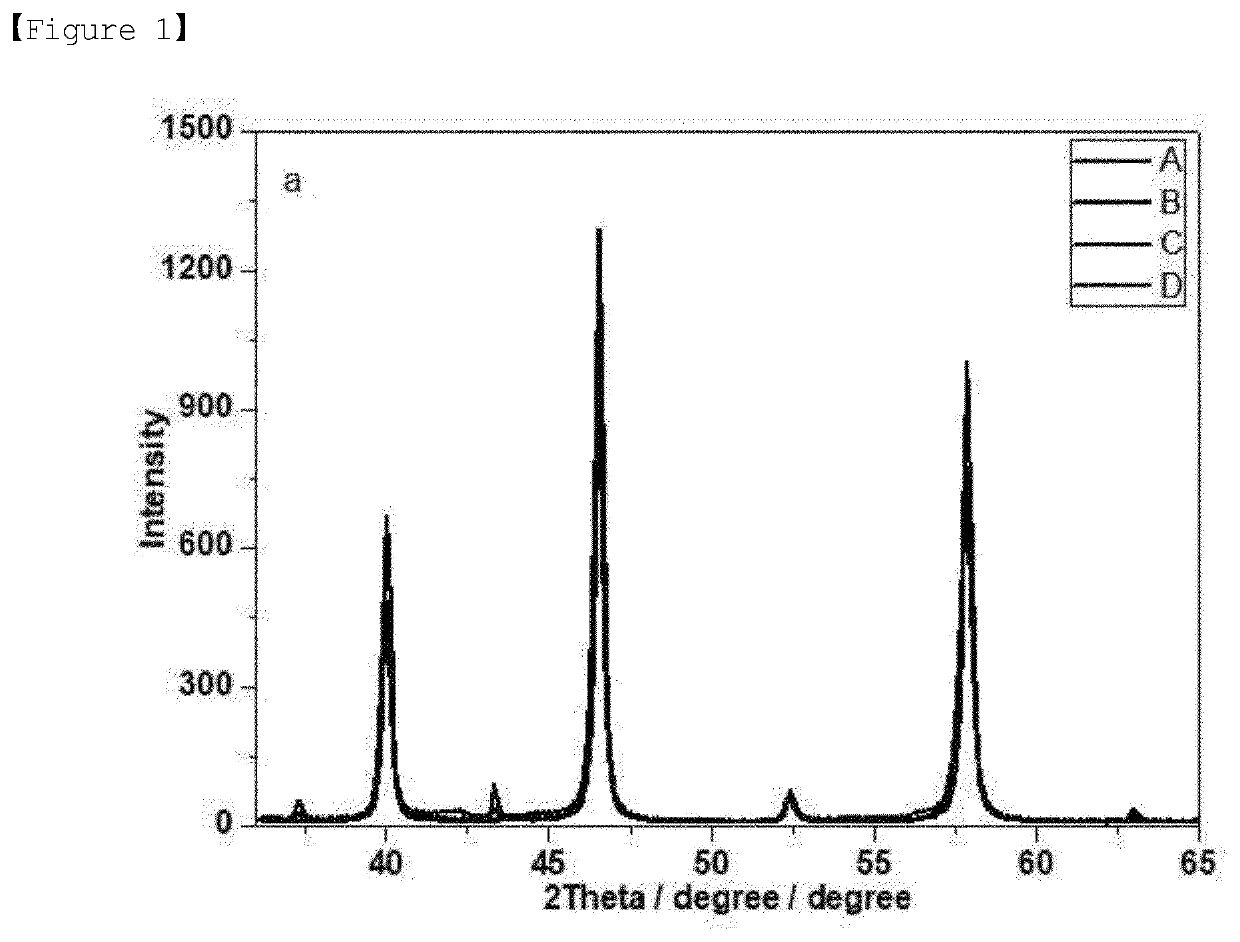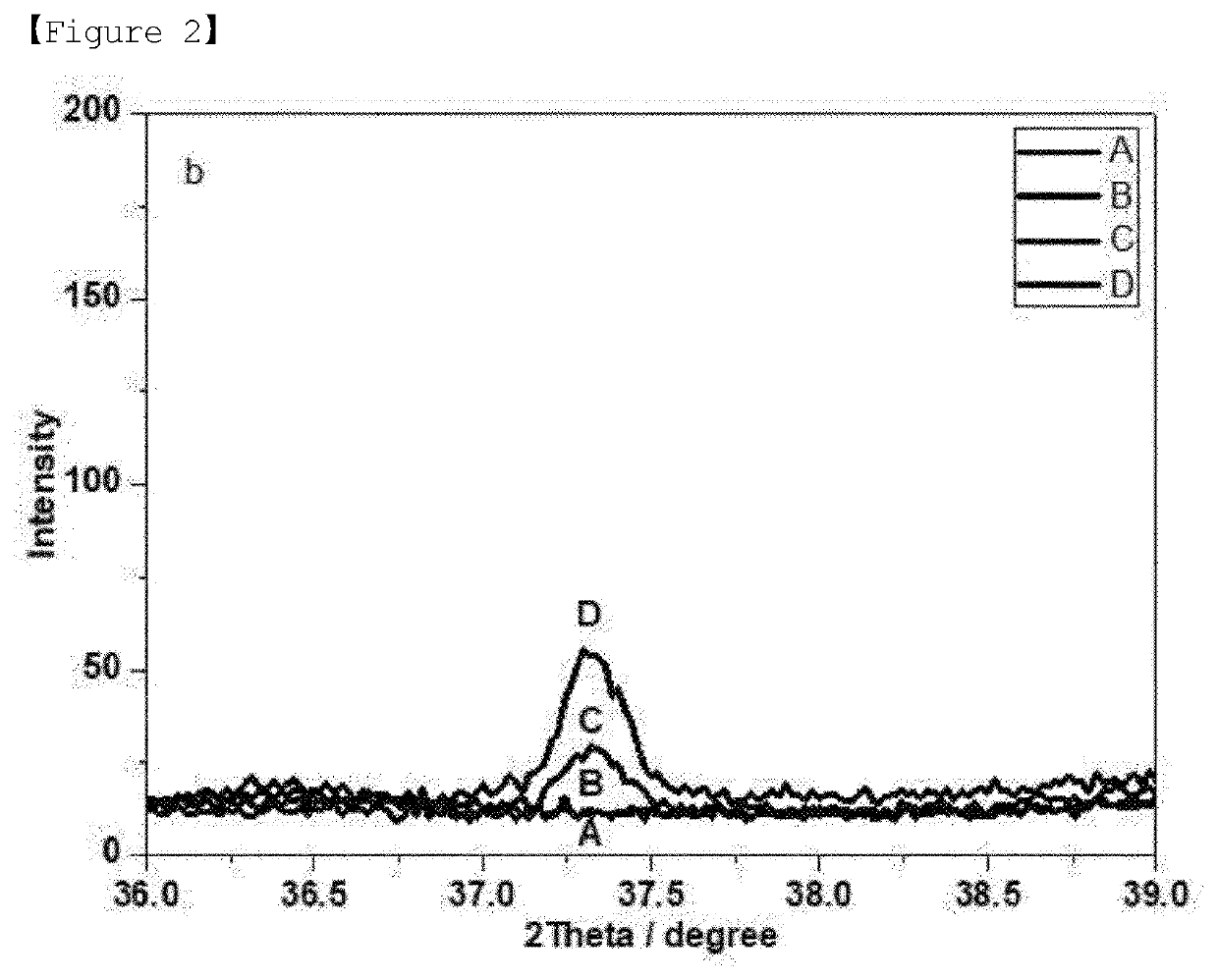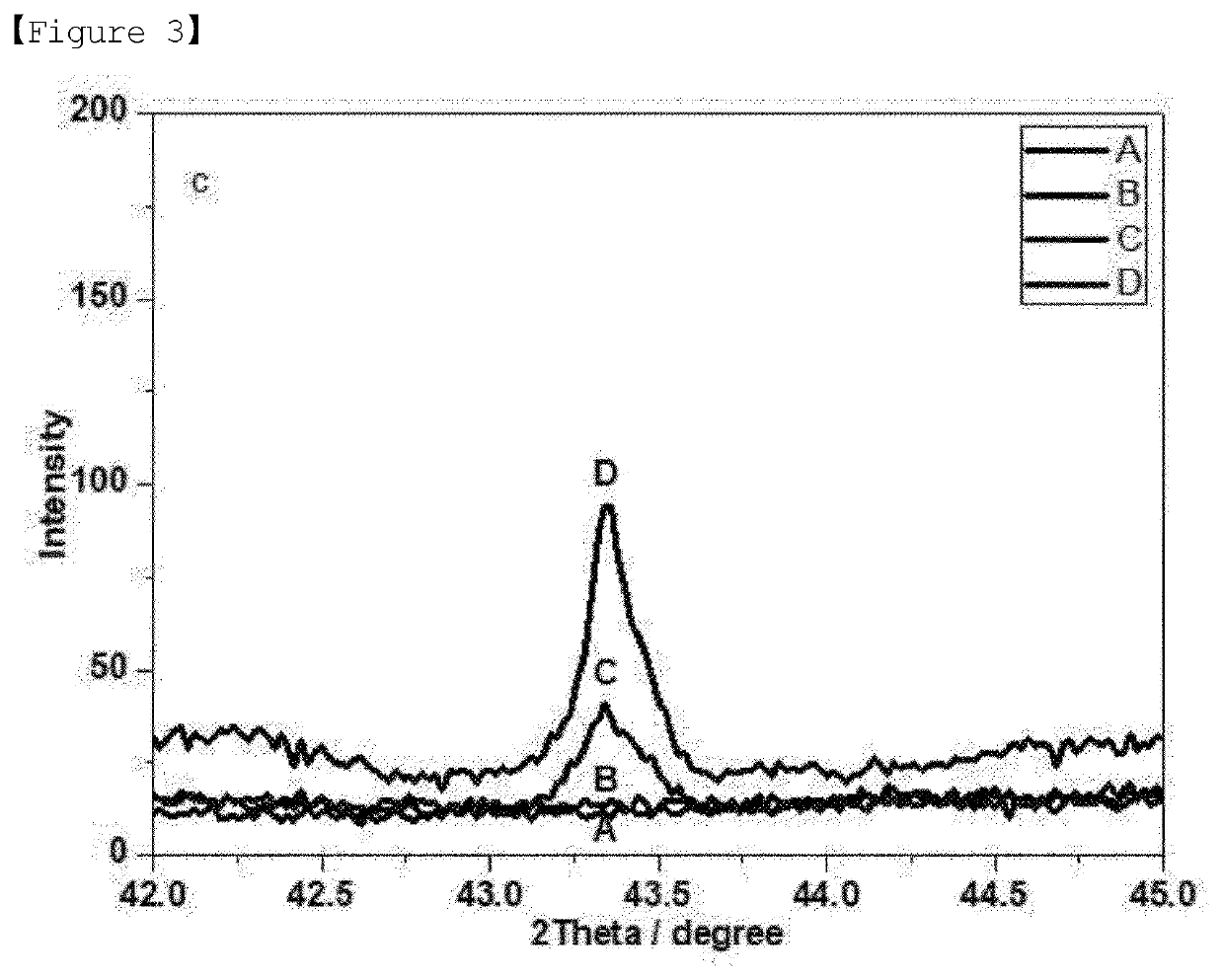Perovskite metal oxide catalyst, in which metal ion is substituted, for reducing carbon deposition, preparation method therefor, and methane reforming reaction method using same
a metal oxide catalyst and perovskite technology, applied in the field of per, can solve the problems of not yet being commercialized, large amount of energy consumed to evaporate excess water having a very high latent heat, and rapid deactivation of catalysts, and achieves the effects of reducing carbon deposition, increasing operating costs, and consuming a lot of energy
- Summary
- Abstract
- Description
- Claims
- Application Information
AI Technical Summary
Benefits of technology
Problems solved by technology
Method used
Image
Examples
example 1
Synthesis of Sr1Ti1-yNiyO3-δ Catalyst Having Perovskite (ABO3) Structure
[0057]Step 1) 0.1 mol of strontium nitrate (99.0%, Sigma Aldrich) was completely dissolved in 200 mL of distilled water under stirring at a temperature of 70° C., and then 0.4 ml of citric acid (99%, Sigma Aldrich) and 0.9 mol of ethylene glycol (99%) were added thereto and completely dissolved, thereby preparing a first mixture solution.
[0058]Step 2) 0.100 to 0.093 mol of titanium(IV) isopropoxide (97%, Sigma Aldrich) and 0.000 to 0.007 mol of nickel(II) nitrate hexahydrate (97%) (provided that Ti+Ni=0.1 mol) were added to and completely dissolved in 200 mL of anhydrous ethyl alcohol (99.9%, Daejung, 99.9%) under stirring at a temperature of 70° C., thereby preparing a second mixture solution.
[0059]Step 3) The first mixture solution was added slowly to and mixed with the second mixture solution, and then stirred for about 24 hours while the temperature was kept at about 70° C.
[0060]Step 4) Thereafter, the solve...
example 2
Structural Analysis of Catalyst by XRD
[0064]First, strontium titanium oxide (SrTiO3, STO3) corresponding to the Comparative Example 2 was produced without using nickel(II) nitrate hexahydrate (97%) in step 2 of Example 1 above, and then it was confirmed by x-ray diffraction analysis that the strontium titanium oxide had a typical perovskite structure (ABO3), like sample A.
[0065]In addition, metal oxides having a perovskite structure were produced as Experimental Examples 1 to 3 by substituting a portion of titanium with nickel while changing the amount of nickel(II) nitrate hexahydrate (97%) in step 2 of Example 1.
[0066]As shown in FIGS. 1 to 4, in the case of sample B substituted with 3 mol % of Ni, only the peaks corresponding to a perovskite structure appeared, and the peaks corresponding to nickel oxide (NiO) were not observed. However, in the case of the samples (sample C and sample D) having an increased Ni content of 5 or 7 mol %, it was confirmed that the peaks corresponding...
example 3
Structural Analysis by TPR
[0068]As shown in FIG. 5, for the Comparative Example and Experimental Examples 1 and 2 produced in Example 1 above, the degree of temperature-dependent reduction of each sample was analyzed by TPR (temperature programmed reduction).
[0069]In the case of sample A (Comparative Example) substituted with no Ni, it was confirmed that reduction occurred at a temperature between 500 to 700° C., but in the case of sample B (Experimental Example 1) substituted with 3 mol % of Ni instead of Ni, it was confirmed that reduction occurred in a wide temperature range of 300 to 900° C. That is, substitution with Ni increased the degree of reduction, indicating that the number of oxygen vacancies in the perovskite structure increased.
[0070]In the case of sample C (Experimental Example 2) substituted with 5 mol % of Ni instead of Ti, a wide peak was observed at a temperature between 200 to 800° C., and this is believed to be because up to 3 mol % of Ni was substituted for Ti...
PUM
| Property | Measurement | Unit |
|---|---|---|
| temperature | aaaaa | aaaaa |
| temperature | aaaaa | aaaaa |
| temperature | aaaaa | aaaaa |
Abstract
Description
Claims
Application Information
 Login to View More
Login to View More - R&D
- Intellectual Property
- Life Sciences
- Materials
- Tech Scout
- Unparalleled Data Quality
- Higher Quality Content
- 60% Fewer Hallucinations
Browse by: Latest US Patents, China's latest patents, Technical Efficacy Thesaurus, Application Domain, Technology Topic, Popular Technical Reports.
© 2025 PatSnap. All rights reserved.Legal|Privacy policy|Modern Slavery Act Transparency Statement|Sitemap|About US| Contact US: help@patsnap.com



